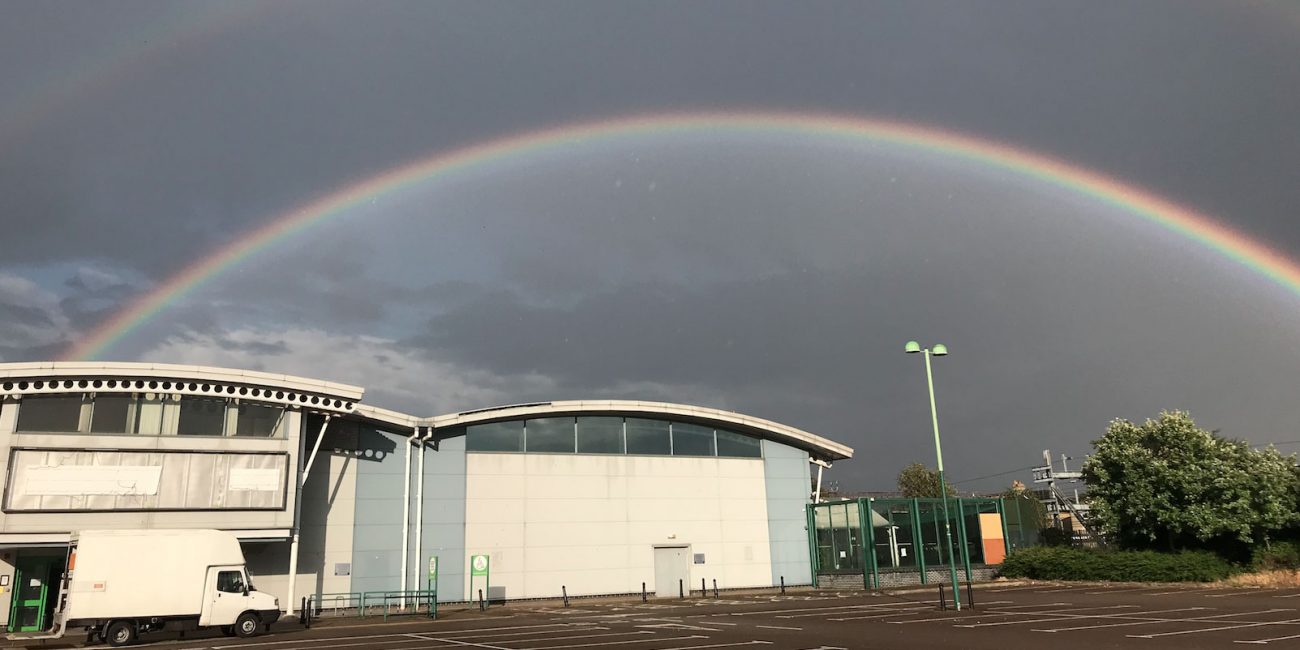IMPORTANT this is only a brief short guide. Get the help and support of a HNS trained professional / company.
9.2: Checklist must haves: master the basics of F.L.A.G.E.
F – FIRE
- If there is a fire alarm, ask the property owner to get it inspected and certified before you move into the space. There should be a label on the alarm with contact number of the authorised service company should a problem arise. The fire alarm and emergency lighting should be inspected/tested every six months.
- Check that Fire Exits are openable and well illuminated. Keep clear pathways to them at ALL times inside and outside. Mark lines on the floor near exits to be kept clear.
- Fire Extinguishers should be kept on red stands or hooks. They should not be used to hold doors open. Extinguishers should be service every 12 months buy reconditioned units. Learn how to “commission and install” the replacements yourself.
- Train people in best use of Fire Extinguishers: Water (wood/paper) or Foam (wood/paper/fuel/oil) or C02 (all previous and for Electrical fires). Aim at the base of the fire but be careful not to scatter embers with the water or CO2 jet.
- Display Fire Evacuation Route plans to fire exits. Show the routes in red, to the outside Assembly Point (define where).
- Appoint Fire Marshals and fire warden training– set a time.
- Weblink Fire Marshall briefing. https://www.highspeedtraining.co.uk/hub/fire-safety-duties-responsibilities-of-a-fire-wardenmarshal/
- Practise Fire Evacuation drills twice a year. Test the Fire Alarm every week.
L – LEGIONNELLA
- Stale or stagnant water in pipes can lead to a buildup of Legionnella bacteria, especially in hot weather. This is particularly important when taking on a new building where water may not have been used for a long period. Flush toilets and all taps for 10 minutes at least once a week to reduce buildup of Legionnella bacteria
- Keep a checklist, date and time, of all this work, titled Legionnaire Mitigation.
- Consult a professional company on this.
A – ASBESTOS
- Many old buildings built up to 1990 used a material called Asbestos. If your building already has a document called an Asbestos Management Report, keep it safe in your Health and Safety file, especially old copies.
- Block off access to those areas. Do not disturb them. Contact a professional to assess the situation if needed
G – GAS
- Gas supplies, boilers, and heating equipment must be checked and tested by a professional every 12 months. Get quotes from Gas Safe registered engineers.
- Even if your gas meter or other equipment has been removed you may still need a test every 12 months to check the old pipes and capping.
E – ELECTRICITY
- The building electrical system must have an NICEIC certificate every 5 years, often called a Periodic Inspection. Most building managers spread the cost by checking 20% of the building every year. Check old files and keep a record of where your building is up to. Get quotes to carry on the work and don’t let anyone tell you they need to start again at Year 1.
- Carry out visual Electric safety checks at least once a month, or once a week in high use areas or periods. Check all plugs, cables, and areas for bare wires – research PAT Testing.
9.3: Other Checklist items to include in your Health and Safety file and duties:
-
- Trip Hazards (anything that can be tripped over) are removed from all corridors and Keep the gangways clear.
- Kitchen Hygiene signs / training Hot water facilities. Adequate work surface area, minimum 100cm, ideally 200cm x standard 60cm deep kitchen worktop. Wipeable surfaces in the kitchen. Training in food hygiene:https://www.highspeedtraining.co.uk
- Define and label a Cleaning Equipment cupboard.
- Storage of Hazardous chemicals – COSHH and Nebosh https://www.thebcfgroup.co.uk/nebosh/nebosh-general-certificate-pages/coshh-training-or-nebosh-general-certificate.php.
- Print out and display Health and Safety guidelines and information. Put up Health andSafety signage for all the above: Hygiene, Fire exits, Assembly point, Danger and Warning signs.WEBLINK.
- Talk to the Health and Safety trained person for the building, get them in to do a regular walk around with you, and advise.
- NB remember people introduce new hazards and it pays to remain vigilant and check regularly. Ask for web links to easy guides and share the information.
- Make a Health and Safety file of all your Checklists – APPOINT A HEALTH and SAFETY PERSON, and a WORKING GROUP to SUPPORT THEM.
- Fire Marshal responsibilities.
- Attend larger events with yellow fluorescent jacket
- Developing and updating a fire evacuation and emergency plan.
- Ensuring that fire-fighting and safety equipment has been properly installed.
- Ensuring that said equipment is always readily available and in good working order.
- Carrying out fire risk assessments.
- Carrying out fire drills and assessing results.
- Taking swift, appropriate action in the event of a fire, i.e. evacuation and fighting fires.
- Monitoring fire safety at all times.
- Actively adopting good fire safety practices.
- Checking all fire doors and exit areas are working and kept clear.
Follow up all the above and you will make a great start. You will impress the building owner, the inspecting authorities for Health and Safety (meet them with pride), and colleagues and crew. If you get these Health and Safety basics right, events and projects will run smoother and happier. Big up the new Health and Safety crew!



